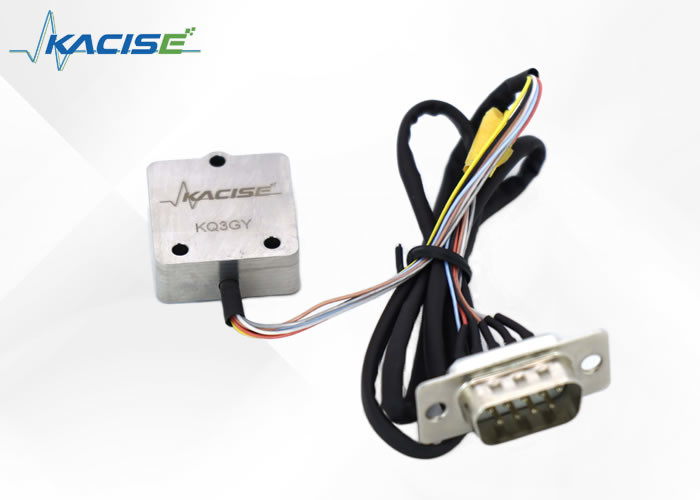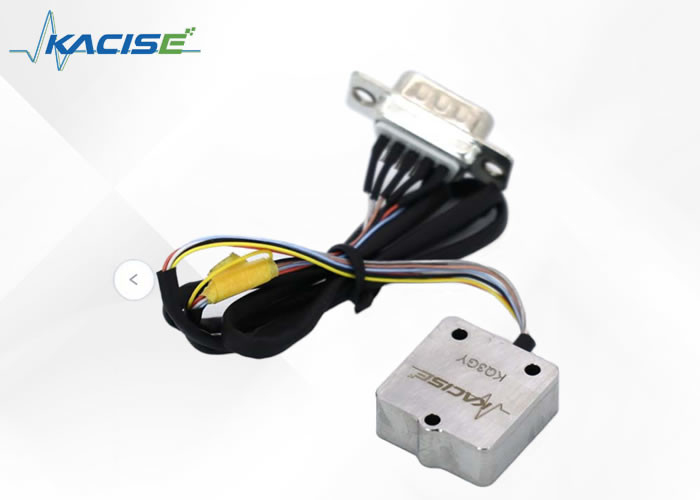Product Description:
The KQ3GY gyroscope utilizes the revolutionary quartz MEMS technology to detect the angular velocities of multiple axes (as configured by the customer). It processes this data and outputs a digital signal through its serial port for easy access and analysis.
MEMS is a cutting-edge micro-device or system that combines various micro-components such as sensors, actuators, mechanical structures, power sources, and communication interfaces. It features high-performance electronic integrated devices for efficient and accurate signal processing and control. MEMS technology enables the production of intelligent, fully-functional and independent systems that can be mass-produced in sizes of few millimeters, or even smaller. The internal structure of these systems is usually measured in microns or even nanometers.
Common MEMS products include accelerometers, optical sensors, pressure sensors, gyroscopes, humidity sensors, gas sensors, and integrated products that combine several MEMS components.
Features:
● Large-scale production
● Short startup time
● Wide operating temperature range
● Low power consumption
● High reliability
● Small size and light weight
● Serial output
Technical Parameters:
| Parameter |
KQ3Gy |
| Power Requirements |
| Input Voltage |
5±0.2 Vdc |
| Input Current |
< 50 mA |
| Performance |
| Measurement range |
±100 |
| Bias |
≤0.03 |
| Bias stability |
≤20 |
| Bias repeatability |
≤20 |
| Scale factor nonlinearity |
≤200 |
| random walk |
≤0.25 |
| Threshold |
≤0.005 |
| Bandwidth |
≥140 |
| Acceleration correlation |
≤0.01 |
| Cross coupling |
≤1 |
| Environments |
| Working temperature |
-40℃~+65℃ |
| Random vibration |
6.06g rms |
Dimensions:
Unit:mm

Applications:
Airborne Instrument Measurement
Airborne instrument measurement refers to the process of collecting data and recording information while a flying object is in motion. This type of measurement is crucial for understanding the behavior and performance of various objects in the air, such as airplanes, helicopters, and drones. Airborne instruments typically include sensors and other types of measurement devices that are designed to operate in challenging environments and provide accurate and reliable data.
Robot
A robot is a machine that is designed to perform automated tasks. Robots can be programmed to perform a wide range of tasks, from simple actions like moving objects to more complex tasks like manufacturing parts or performing surgery. Robots are becoming increasingly common in many industries, including manufacturing, healthcare, and transportation. They can be controlled remotely or operate independently, depending on their programming and capabilities.
Automated Testing
Automated testing refers to the use of software tools and other technologies to perform tests and assess the performance of various systems automatically. This type of testing is becoming increasingly important as software and technology become more complex and difficult to test manually. Automated testing can help reduce the risk of errors and improve the overall efficiency and effectiveness of testing processes.
Attitude Reference System
The attitude reference system is a critical component of many navigation, guidance, and control systems. It is designed to provide accurate and reliable information about the orientation and position of an object in space. This information is used to control the movement and stability of various flying objects, such as airplanes, helicopters, and spacecraft.
Control System
A control system is a set of devices and processes that are designed to manage and regulate the behavior of a system. Control systems are used in a wide range of applications, including manufacturing, transportation, and aerospace. They are typically designed to operate automatically and can be programmed to respond to various inputs and changes in the system's environment.
Flight Test
A flight test is a type of test that is performed on a flying object, such as an airplane, to assess its performance and behavior in different flight conditions. Flight tests are typically carried out to evaluate new designs, systems, and technologies or to ensure that an existing aircraft is functioning correctly and safely. Flight tests can be challenging and require specialized equipment and personnel to carry out effectively.
Platform Stability
Platform stability refers to the ability of a flying object to remain stable and level during flight. This is critical for maintaining control and ensuring the safety of the aircraft and its occupants. Platform stability can be affected by a wide range of factors, including wind conditions, turbulence, and the design and performance of various systems and components. Maintaining platform stability requires careful planning, design, and testing throughout the development and operation of flying objects.
Support and Services:
Our Electronic Gyroscope Sensor is designed with precision to provide reliable performance for your applications. Our support includes detailed product documentation, an extensive online knowledge base, and troubleshooting guides to help you resolve any issues you may encounter.
We are committed to the satisfaction of our customers and strive to provide exceptional after-sales support. Should you have any feedback or suggestions, we welcome your input as it helps us to continuously improve our products and services.
Packing and Shipping:
Product Packaging:
Our Electronic Gyroscope Sensor product comes in a sturdy cardboard box with foam inserts to ensure safe transportation. The box is labeled with product information and handling instructions.
Shipping:
We offer worldwide shipping for our Electronic Gyroscope Sensor product. Shipping options include standard and expedited shipping. All orders are processed within 1-2 business days and shipped via reputable carriers such as FedEx and UPS. Customers will receive a tracking number once their order has been shipped.

 Your message must be between 20-3,000 characters!
Your message must be between 20-3,000 characters! Please check your E-mail!
Please check your E-mail!  Your message must be between 20-3,000 characters!
Your message must be between 20-3,000 characters! Please check your E-mail!
Please check your E-mail! 


